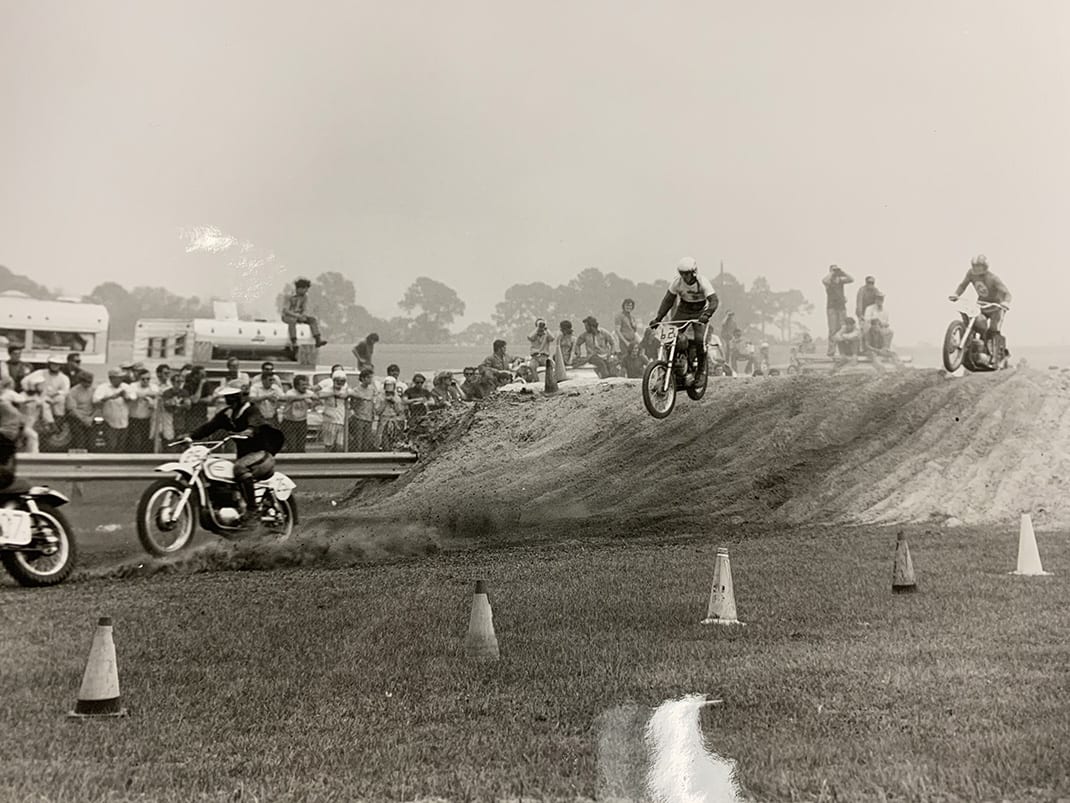Having built a motocross track, mostly by hand, the next obstacle came when AMA officials inspected the track.
“I’d taken some logs and dirt and built up a little jump over a drainage ditch,” Bailey recalled with a grin. “I mean the jump couldn’t have been more than 15 or 20 feet and the AMA guys said, ‘This is too dangerous. What happens if they don’t make this jump?’ And I told them if a rider couldn’t jump that little ditch, they shouldn’t be out there racing. Well, they weren’t impressed by that, so I had to build a little escape route around the jump. I called it ‘the Chicken Trail.’”
More than a few riders chickened out and took the escape route around the jump, which by today’s standards is tiny.
That 1971 race was won by Gunnar Lindstrom on a Husqvarna in the 250 class, while Bryan Kenney, also on a Husky, triumphed in the Open class. Bailey finished on the podium in the 250 class, placing third on the track he designed and built.
The race was such a success that track officials decided to move the “motocross” track to the grassy area in the tri-oval in front of the main grandstands.

There Bailey found new challenges, namely trying not to dig up drainage tiles or even worse, electric and utility lines that ran underneath the track area.
“They came out and told me roughly where the pipes and utility lines were,” Bailey remembered. “But nobody knew for sure. We found a few of them.”
It was several years before the race got big enough that Daytona officials began to budget for track-building equipment and several more years after that — in the 1980s as Bailey recalls — before he was allowed to bring in clay from the outside to make for more durable jumps than the ones previously made from sand and lime rock.
Bailey was the track builder until the mid-2000s and not long after those responsibilities were taken over by Supercross racing legend Carmichael.
In 1971 and ’72, the Daytona Motocross, as it was known then, was part of the Winter-Am Series and in ’73 it counted toward the AMA Motocross Championships in the 250cc and 500cc classes.
Finally, in 1974, it became part of the Yamaha Super Series, which later morphed into the AMA Supercross Series we know today. Interestingly, the race was not referred to as the Daytona Supercross in the Daytona race program until 1977.
With its massive size compared to a normal stadium track and energy-draining sand, the Daytona Supercross has produced its share of surprise winners.
As far back as 1976 when Tony DiStefano won the race, the track had a reputation as one on which only the toughest could win.
For example, when Rex Staten won in 1980, it was the only Supercross victory for the rider better known for his exemplary motocross skills. The same could be said for riders like Pierre Karsmakers, Ricky Ryan and Justin Brayton. All were considered motocross specialists who won at Daytona, but no other Supercross tracks.
Understanding the history of the race, the old adage of expect the unexpected is perhaps more apt for the Daytona Supercross than any other Supercross event on the series calendar.
